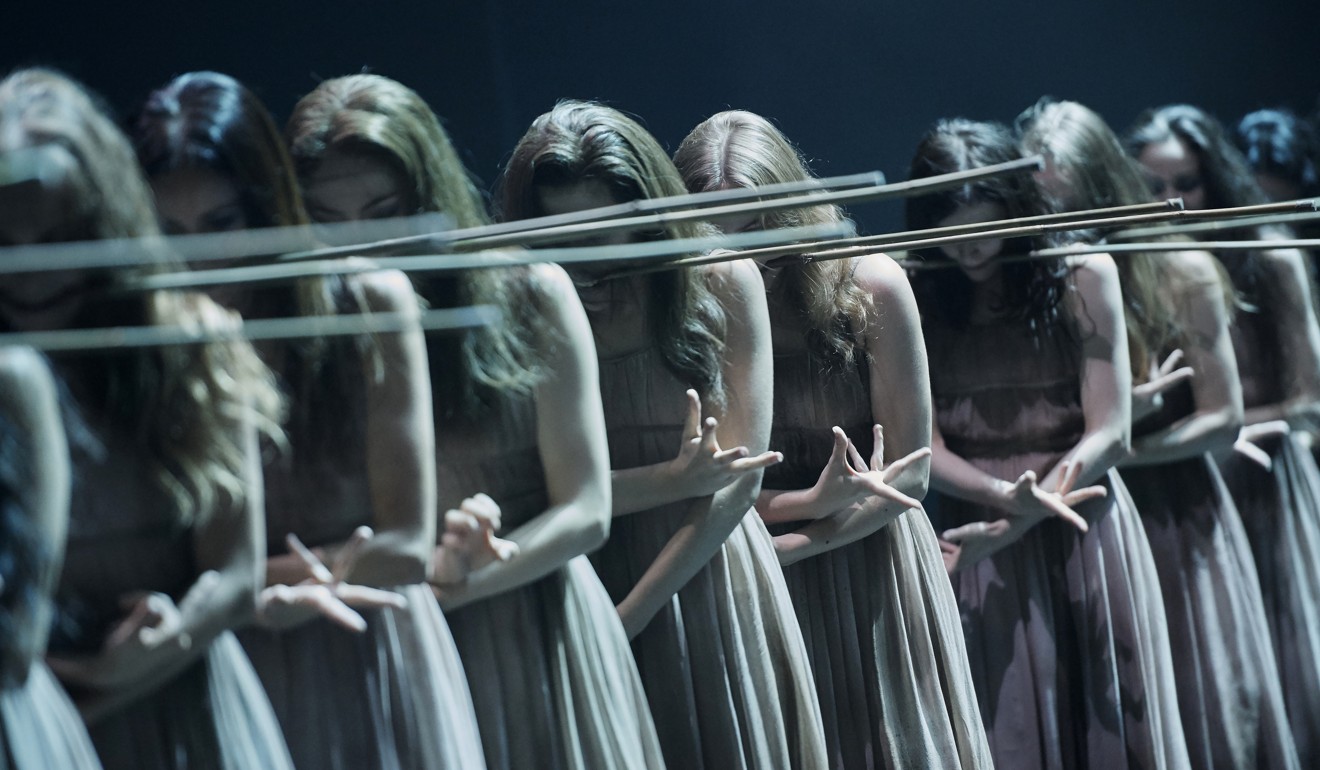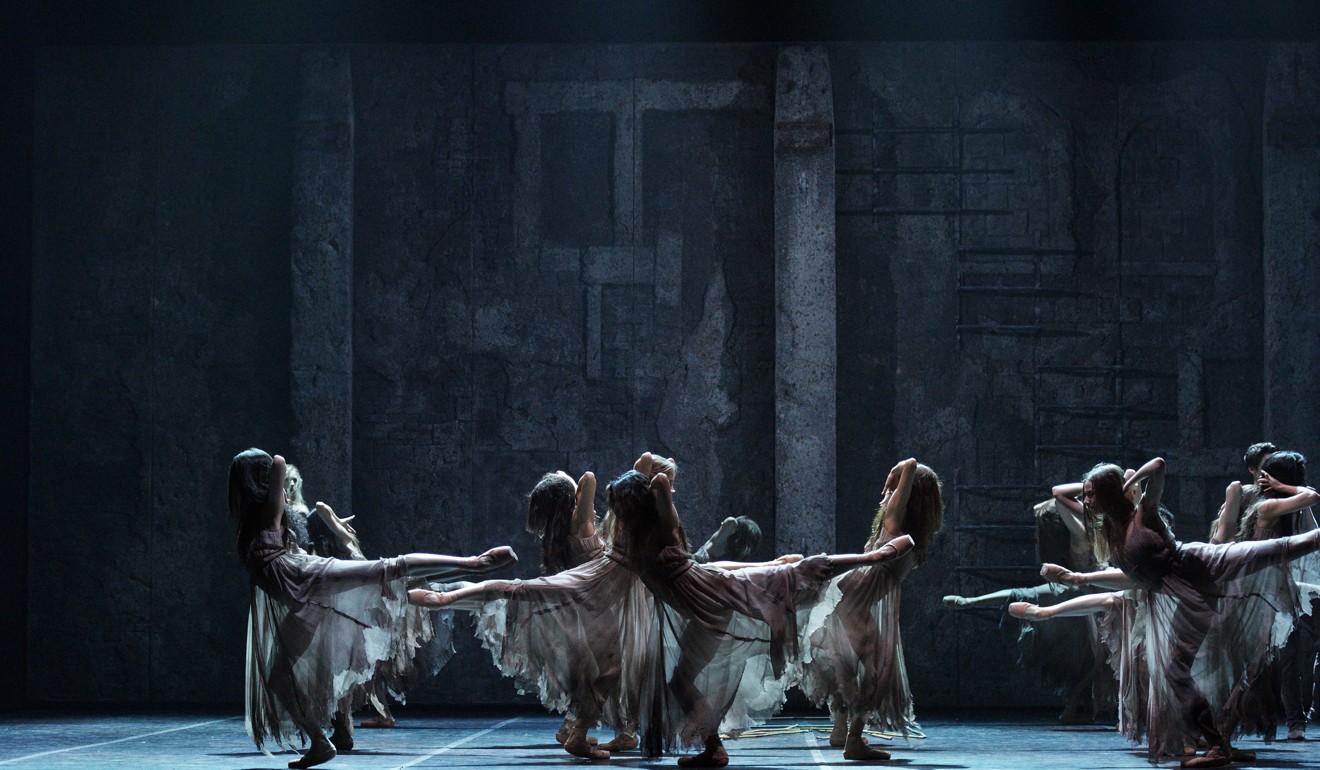
Dancer Stina Quagebeur to give Hongkongers a rare chance to watch her perform Akram Khan’s ‘Giselle’
English National Ballet’s First Artist tells how she developed role of Myrtha, Queen of the Wilis
Her long limbs and exquisite elegance are an unmistakable feature of the British ballet stage. Next month, Hongkongers will have a rare opportunity to watch Belgian-born Stina Quagebeur dance.
Quagebeur will grace the stage at the Hong Kong Cultural Centre in Akram Khan’s groundbreaking retelling of the classic ballet, Giselle. She will be dancing one of her most mesmerising roles: Myrtha, Queen of the Wilis, vengeful supernatural spirits who are deceived by their lovers, die as virgins, and exact their revenge on men by forcing them to dance until death.

We speak to Quagebeur ahead of her performance on her life in dance, her role in G iselle, and what it was like working with celebrity dancer and choreographer Khan in this contemporary take on a classic, described as a “masterpiece of 21st century dance”.
Q: You started dancing from a very young age – where did your passion for dance come from?
A: The first time I saw a ballet as a young girl, I knew immediately that this was absolutely what I wanted to do. I started dancing at the age of six. My parents gave me DVDs of the classic ballets, such as Swan Lake and Don Quixote, and I would watch them obsessively. I knew all the music and dance steps.
My parents also took me to see modern dance works, and I loved these, too. After the shows, I would choreograph my own variations at home. It was a whole world I was into.
Q: It was also a world that required you to leave your home country – when did you move to Britain?
A: I auditioned for, and was accepted by, the Royal Ballet School in London when I was 11 years old. I boarded at the school. We had four hours of dance training in between academic lessons every day.
At the age of 16, I joined the English National Ballet School, and stayed there till I was 18. Then I joined the English National Ballet company, where I have now been for about 13 years. I have been First Artist at the company since 2016.
Q: So what’s it like living your childhood dream on a daily basis?
A: It was strange at first to get paid to do what I love! It didn’t feel like it was work. But it can be hard, and it takes incredible drive. You need real passion to be a professional dancer; passion gives you the energy to keep going when it’s tough.
Q: Are you still as passionate about choreography these days?
A: At the moment I’m very much a dancer but I do choreography in my own time, in workshops and for shorter dances. I use every opportunity I can to build up my skills.
When you’re dancing, you can only interpret the role, but through choreography you can really move the audience. You can make them think about the message of what you are bringing to the stage. You can show them what you as the choreographer want them to see.
Q: You worked with Akram Khan to develop your role as Myrtha, Queen of the Wilis – what was that like?
A: Yes, we worked very closely. He, of course, was in charge but we developed the role together. He is wonderful to work with. He gives you everything that is in his head, we’re all with him on his journey.
All choreographers are different; some have their vision in their head and use your body as a tool. But Akram tells you exactly what he is thinking. We know where every movement came from, and how a simple idea is translated into a movement. This is important in Giselle, especially, as it’s a narrative piece.
I think it’s an incredible piece and it was wonderful to see how it evolved and how he developed it through.
Q: Were there any difficult aspects when developing the role?
A: It was hard at times. Sometimes I felt like I had hit the wall and couldn’t do more than what I was doing. Akram gives you barriers, and you have to find the freedom in those barriers … explore what you can do in the world he has just given you.
It’s hard to describe but when I was trying to give Myrtha her character, I might think that perhaps Myrtha would feel like this, and I would bring that emotion to my movements, but Akram would say no, that is not part of her, don’t go in that direction, that is too strong or too weak. So I would feel stuck and that I couldn’t carry on. But then I realised that rather than focus on the noes, explore the yeses, and in that way her character gained real depth.
Q: Myrtha is a captivating character – how do you see her?
A: Myrtha is a very strong and dynamic character. It’s Myrtha who stands up for these women, the Wilis, who have been deceived by their lovers. In Act 2, we see Giselle lying dead in her lap; she is another young woman who has died tragically and who Myrtha needs to bring up from the grave to get her to stand up to what happened to her.
Myrtha is vengeful and dominant but also a nurturing mother figure. She is very bitter about what has happened and wants to fight back. She doesn’t show any weakness. She wants Giselle to be strong, but Giselle is perhaps the first person to not do what she says. Giselle asks Myrtha to give her some time before she gets her revenge on her lover, Albrecht. At this point Myrtha softens slightly, perhaps she remembers what love is, what good love is.
At the end, Giselle chooses Myrtha, she leaves Albrecht behind but she does not kill him. As the piece closes, we see that Myrtha and Giselle understand each other; Giselle looks at Myrtha and they go off together.
Q: The Wilis use sticks of cane as props, while in classic versions of this ballet the dancers usually hold flowers. This is a brilliant piece of choreography – can you give some insight into this?
A: The sticks highlight that the Wilis are really an army of warrior women. This is their tool of power. The sound of the bashing of the sticks on floor adds to the tension and drama during the killing scene.
Akram’s Giselle is very different from classical Giselle. Akram has created an incredible visual look on stage through movement, lighting and music. It’s so emotional and powerful.

Q: How do you think this contemporary version is different from the classic ballet?
A: This piece is a blend of classical and modern. Many people who have come to see it don’t know dance. In a classic telling of this ballet, you can have a ballerina dance the role, and the more you know about ballet, the more you will appreciate it and think she is amazing. But someone who does not know ballet might ask questions about it but not feel emotionally linked.
Ballet can almost be a foreign language. But Akram brings ballet down and makes it more human so that people can recognise it and understand it. There are no spectacular lifts or jumps, every movement had to have a quality, an emotion, behind it.
In this Giselle, the audience is really emotionally connected. Everyone gets completely absorbed. I have friends who’ve never seen dance, and I tell them to come and see this one. Just the music by itself is so impressive. This piece shows how powerful dance can be.
Q: Are you looking forward to your Hong Kong visit?
A: Absolutely! I was in Hong Kong about 10 years ago performing Alice in Wonderland. I’m looking forward to being back, and to dancing in something as special as Giselle this time.
Akram’s piece feels different every time we dance it and each performance has something unique. I feel very lucky to have been in the creative process, and to perform it with all the other outstanding dancers in the company around the world.
Giselle will be performed at Hong Kong Cultural Centre from Thursday, June 28 to Saturday, June 30 at 7.45pm, with a matinee on Saturday at 2.45pm.

